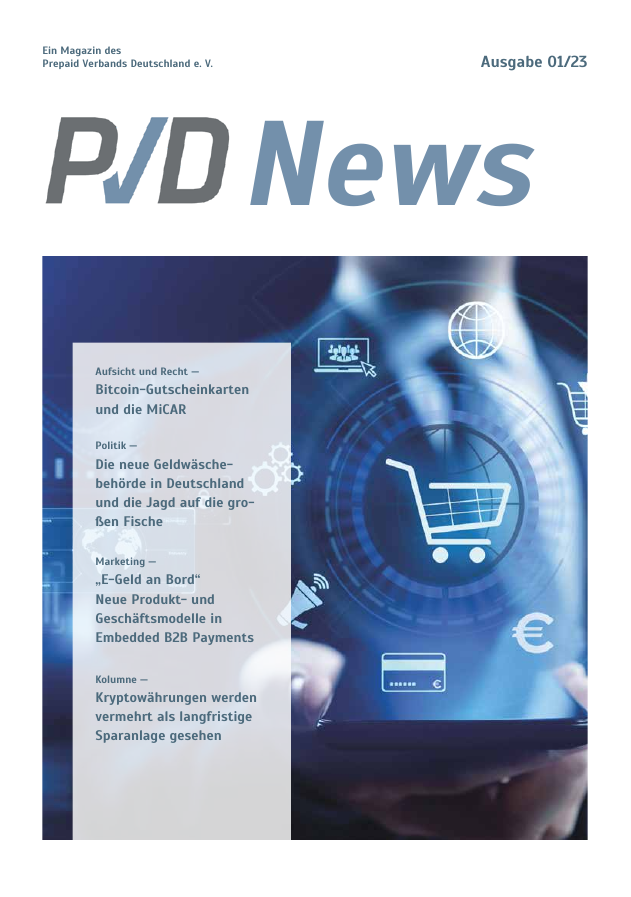Stellungnahme vom Juli 2022
zum Review der PSD2
Der Prepaid Verband Deutschland e. V. (PVD) nimmt im Rahmen der Konsultation der EU-Kommission zum PSD2-Review wie folgt Stellung.
New Definition of a Payment Instrument
Based on the definition (Art. 4 (14)) of the PSD2, a payment instrument enabling the initiation of a payment order could be:
- a device or
- a set of procedures or
- a device and a set of procedures.
Based on the usage of the expression “device” in the PSD2, it should be considered in this context as something physical, while the set of procedures refers to the functionality of the instrument.
According to the legal definition of card-based instruments in Art. 2 (20) of the Interchange Fee Regulation (2015/751), the term „payment instrument“ focuses obviously on the feature of a payment instrument as „device“: “including a card, mobile phone, computer or any other technological device” while the function and procedure is shifted to the term „payment application“.
The device feature of the payment instrument is also in the foreground at another point, as for example in the definition of co-badging (Art. 4 (48) of the PSD2 respectively Art. 2 (31) of the IFR): “co-badging” means the inclusion of two or more payment brands or payment applications of the same brand on the same card-based payment instrument.“ Here, too, we find a clear distinction between the two levels: “device” and “applications”.
The meaning of the term „payment instrument“ therefore depends on the context: device and/or payment application. In the text of the PSD2 we find different interpretations, e.g. Art. 68 and 69 (payment application) or in Art. 70 rather as device.
However, a consistent application of this hybrid definition of the payment instrument leads to strange results. The issuer of the application does not have to be identical with the issuer of the device. Example: Smartphone as device and a payment application of a PSP. The smartphone meets the requirements of the definition of a payment instrument: “a personalised device…and used in order to initiate a payment order.” According to Annex 1 of the PSD2, the issuing of a payment instrument is a payment service. So far, the provision of smartphones on which a payment application can be loaded is not yet considered a payment service under PSD2.
In practice, there is even an intermediate stage between the technical device (smartphone) and the digital payment application: the digital wallet, in which different payment applications from different providers can be loaded (e.g. Google Pay wallet with payment cards of issuer A, B etc.). So far, however, only the providers of the payment applications are supervised as PSPs according to PSD2 and not the hardware- and/or software-based container providers. Consequently, either the definition of a payment instrument according to Art. 4(14) of the PSD2 is wrong, its PSD2-inherent interpretation or the practice of the supervisory authorities.
From our understanding, a set of procedures agreed between the payment service user and the payment service provider and used in order to initiate a payment order is not an option but a criterion and minimal requirement for every payment instrument.
A new definition of payment instrument that is in line with supervisory practice could read:
“payment instrument’ means a set of procedures agreed between the payment service user and the payment service provider and used in order to initiate a payment order. This payment application could be contained in a physical device (like a card, smartphone, tablet etc.) and/or in a personalised digital carrier (e.g. wallet).”
We strongly suggest amending the definition of a payment instrument in the proposal for a PSD3.

